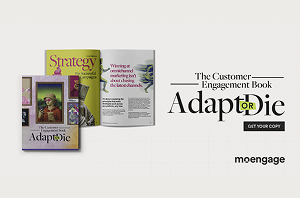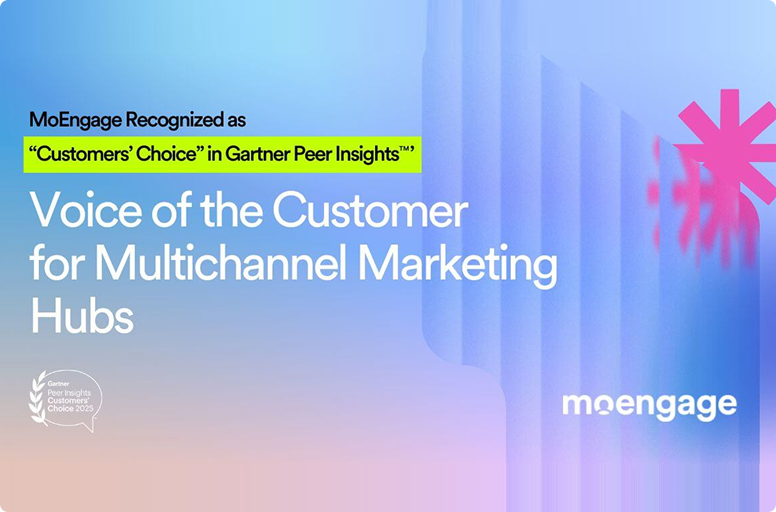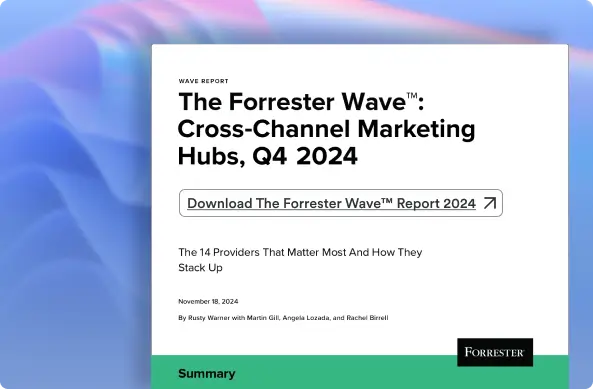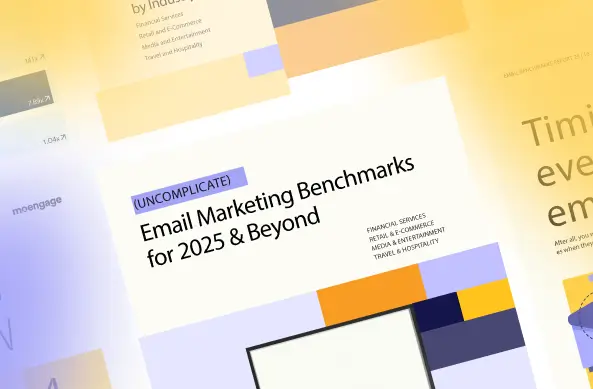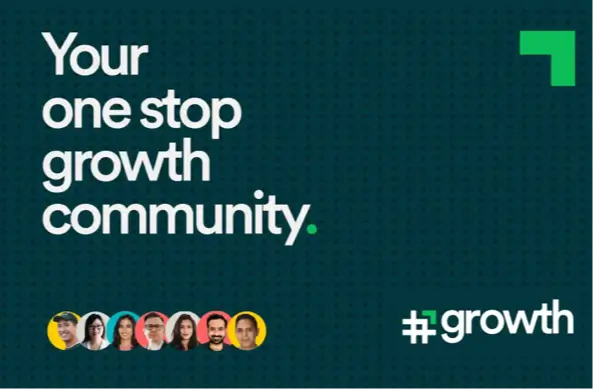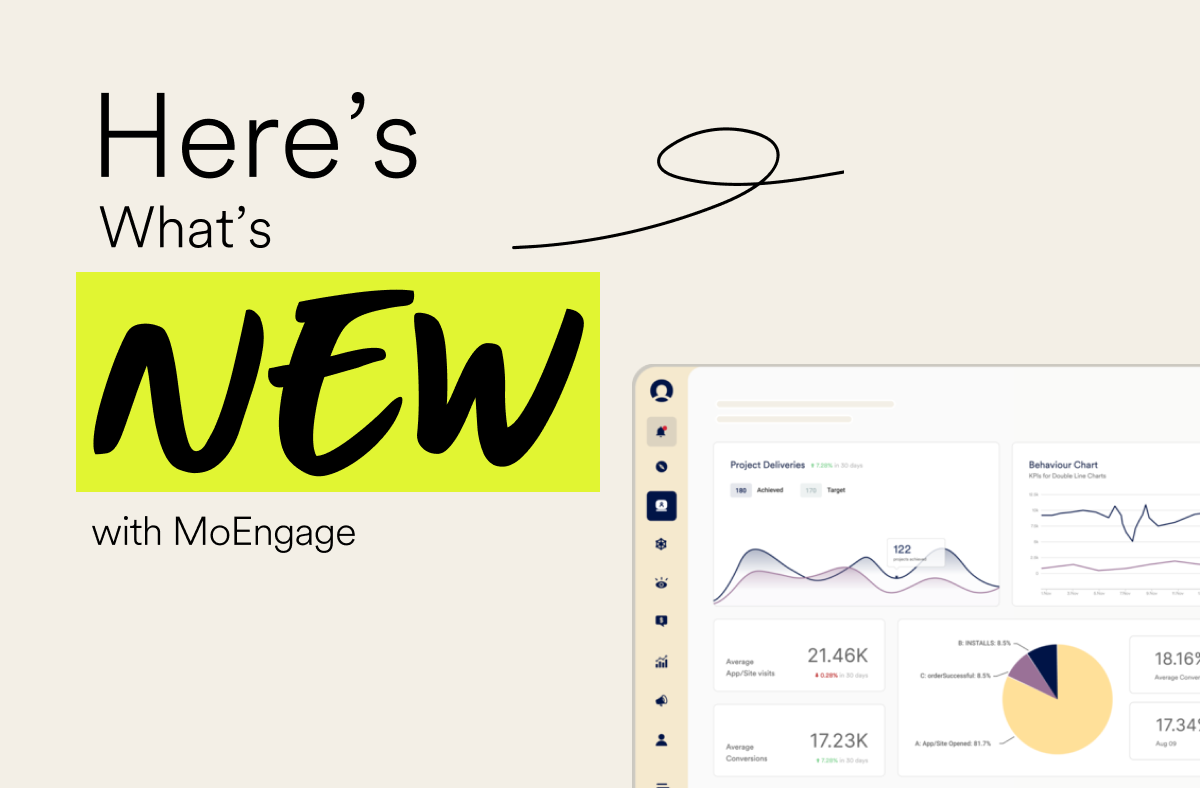Types of Segmentation and Examples for Each Customer Segmentation
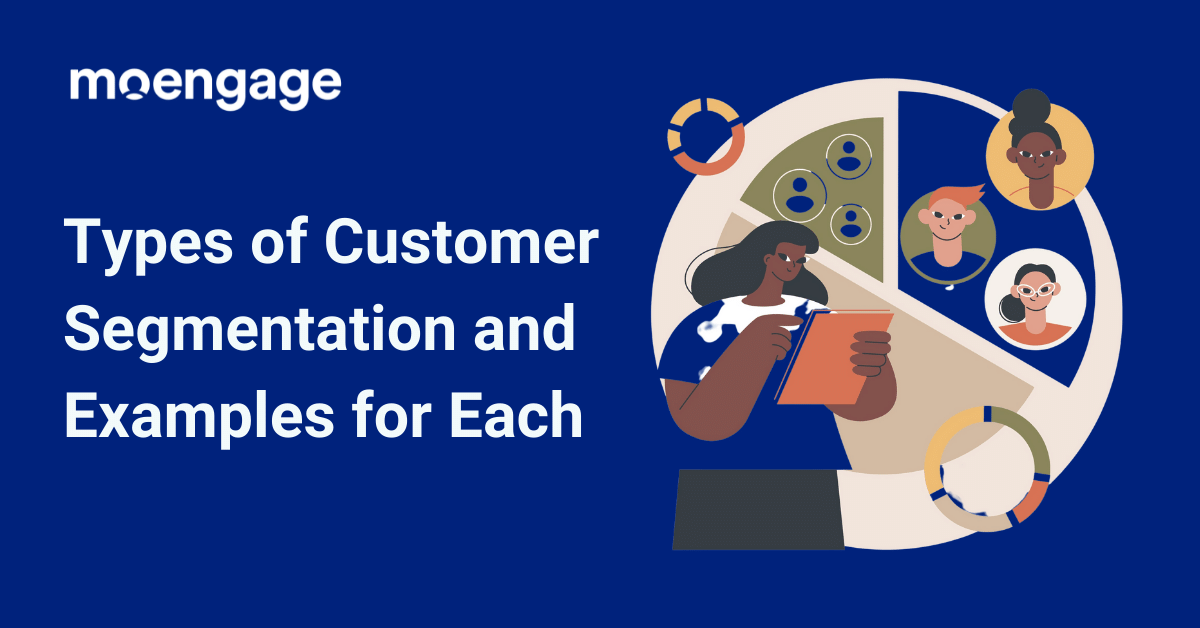
Reading Time: 8 minutes
If you’re looking to improve the effectiveness of your marketing efforts, then you need to send personalized marketing messages to your customers. In fact, businesses that focus on enhancing the customer experience have seen an 80% spike in revenue.
But how do you personalize your brand message to be unique and targeted to each customer?
That’s where different types of customer segmentation come into the picture. Different types of customer segmentation exist to help you understand your audience better so you can target your marketing campaigns.
What is Customer Segmentation?
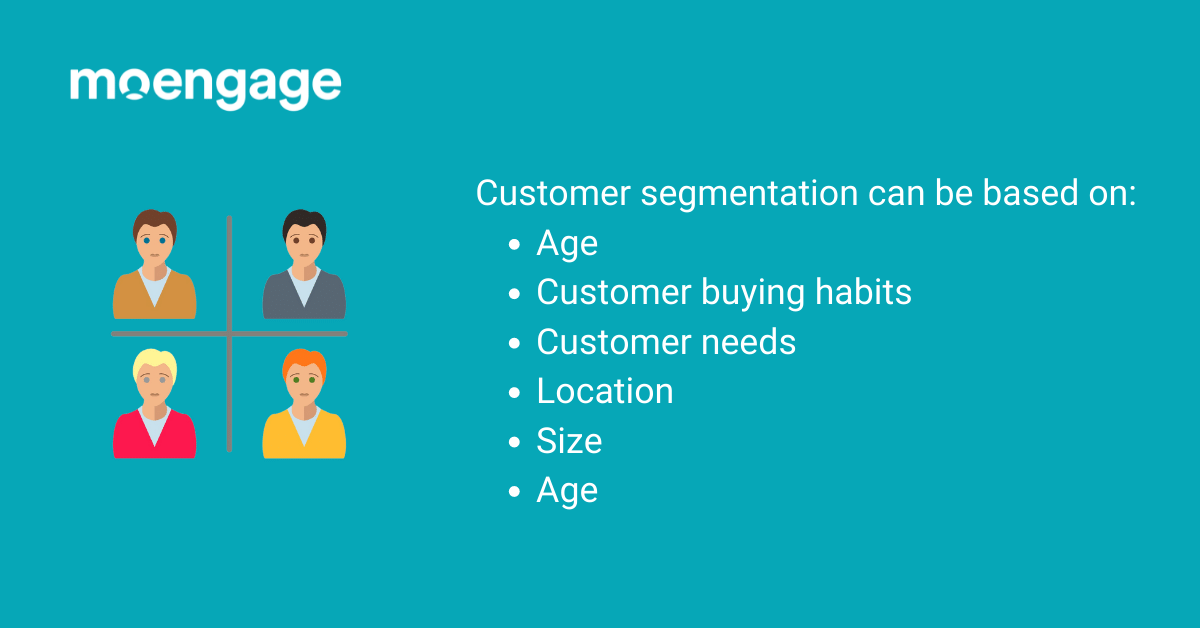
Customer segmentation splits your customers and prospects into groups based on various features and variables—customer needs, buying characteristics, size, location, and age—helping you market to each group effectively.
Think of it as giving focus and providing insight into the landscape of the market.
You can leverage customer segmentation to uncover characteristics to group your customers into individual segments that have something in common.
Use the information to personalize your marketing and sales efforts, ensuring it suits the specific needs of each group and helping you make a good impression.
| Note: Want to know how personalization can help with your digital customer engagement in 2022? Get the customer engagement report here. |
Why is Customer Segmentation Important?
Customer segmentation is important for a number of reasons. It:
-
-
- Provides knowledge about your customers to create tailored content that is relevant to them
- Selects the best communication channel based on the different segments
- Creates brand awareness and builds brand identity
- Establishes better customer relationships and improves customer service
- It helps you better understand and prepare for any customer segment-related challenges
- Improves business rank in competitive markets
- Identify ways to improve opportunities for product or service offerings
- Facilitates customer retention, assuring you a steady flow of returning customers
-
How to Use Customer Segmentation in Your Marketing?
Customer segmentation requires gathering information about your customers and analyzing it to identify patterns you can use to create segments.
Here are four distinct steps to help segment your customers better:
-
-
- Set a goal you want to achieve from the segmentation process
- Identify the customer segments by collecting data and analyzing the results
- Evaluate the specific target segment to design your personalized marketing at
- Develop a solid marketing strategy that will address the requirements of each segment
- Identify and execute a launch plan
-
Giving customers what they want is the biggest challenge for marketers. It’s all about customer context – be sure to think and act like a customer to engage them in the purchasing process.
| Note: Find out the maturity of your customer engagement strategies with our customer engagement maturity index calculator. |
Customer Segmentation Types and Examples
You’ll find different variations of customer segmentation models based on your business goals. We have listed eight of the more prominent ones, along with relevant examples, to help you better understand customer segmentation models and how you can use them for your marketing efforts.
Let’s take a look.
1. Demographic Segmentation or Socioeconomic Customer Segmentation
Demographic segmentation is a form of customer segmentation that helps businesses understand their users better and meet their needs effectively. It involves breaking down your target market into groups based on age, earnings, occupation, and gender, among others.
Companies use demographic segmentation variables to analyze their market and accordingly adapt marketing strategies and promotion. The most commonly used variables and examples are:
- Age: It’s common knowledge that what appeals to a certain age group may be repulsive to the members of another age group. You can use this form of demographic segmentation to adapt your advertising efforts for different age groups to maximize results and influence purchase patterns.
Example: Cuddly stuffed animal advertisements are aimed at small kids, while video-game ads are marketed to older kids from 13 and above.
- Gender: Segmenting based on gender isn’t gender stereotyping. Instead, it can be used to market products or even services based on the personalities of each gender.
Example: Usually, you would find advertisements for makeup are typically directed towards women over men.
- Earnings and occupation: Household earnings can give you an idea of your potential customer’s spending power. High-income earners may be interested in purchasing expensive or even luxurious items from various online platforms as opposed to low-income earners, who may desire cheaper items.
Example: A brand selling high-end wristwatches targets customers with high incomes and bases their advertisement on luxury, knowing that these customers can afford them.
- Family status: Categorizing your customers based on their marital status or family structure, like how many kids they have, is another critical pointer for this form of customer segmentation. Large families may desire low-income products that they can buy in bulk, while smaller families or single people may opt for luxury purchases.
Example: Advertisements for easy-to-prepare meals targeted to parents juggling work and childcare.
- Ethnicity and religion: Demographic segmentation allows you to group your users based on religion and culture as it influences the buying habits of your target market.
Example: Businesses selling food from specific cuisines and jewelry with religious symbols for a particular demographic.
2. Behavioral Segmentation
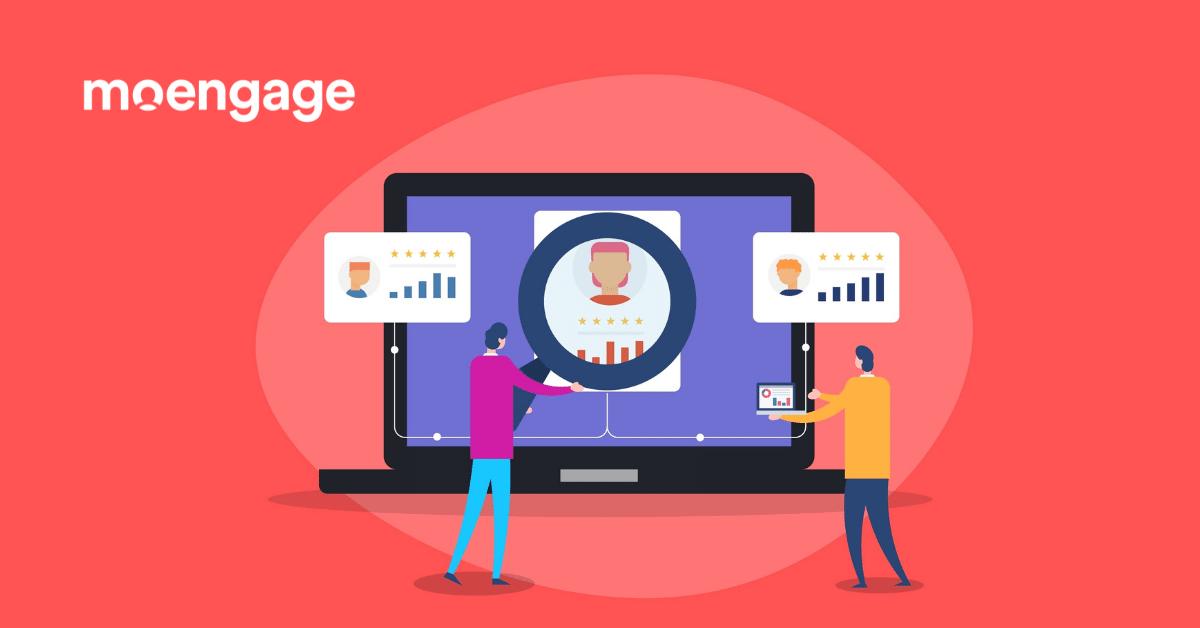
This form of customer segmentation is the sorting and grouping of customers based on the kinds of behaviors they exhibit. These are their buying habits, attitudes towards a product, needs, frequent use of, and likes/dislikes of a product, the number of times they would open an app or even their response rate.
Customers with similar buying patterns can be grouped together and targeted with high precision. Understanding their behavior enables you to employ deeper personalization through segmentation.
Buyer behavior has four main behavioral segmentation techniques:
- Purchasing and Usage Frequency
- Brand Loyalty
- Benefits needed
- Occasion-based
Analyzing customer behavior reveals insights into which benefits or features are most relevant to your target audience.
Let’s take a look at some behavioral segmentation examples: The same demographic group may buy shampoo but may do so for different reasons, like volumizing, oil reduction, or a damaged scalp. This is where behavioral vs. demographic segmentation comes into play—the difference in buying behavior within the same demographic group.
3. Geographic Segmentation
Geographic segmentation involves grouping customers based on where they live. You can use geographic segmentation parameters to identify and segment customers, including location, climate, culture, and population density.
Geographic segmentation helps you understand how patterns like this can affect your business, allowing you to tailor your campaigns correctly. For instance, your customer base might be highly influenced by geographical factors such as the weather of the location, which can indirectly or directly affect their buying habits.
Let’s use Nike as an example. While you’ll find Nike ads for American football and baseball in the U.S., you’ll see ads for European soccer products.
This is a classic example of geographic segmentation instead of demographic segmentation.
4. Technographic Segmentation
Technographic segmentation groups customers according to their preferred choice of technology or software.
Recent customer data statistics show that 79% of U.S.-based smartphone users bought something online through their mobile phones. In fact, even tablet purchases are set to rise by over $64 billion in 2022.
Why is this important, you ask?
As a business, knowing how people access your content will maximize user experience and help you target them more effectively. Technographic segmentation lets you group your customers based on the type of device they use, the apps they prefer, and the software they are working with. This helps you create bottom-of-the-funnel content that resonates with your target audience, significantly improving your chances of boosting revenue.
For example, consumers accessing an online tech store from the Safari browser might be interested in Apple products. With deeper personalization through segmentation, you can easily target and create ad content for this specific group.
5. Firmographic Segmentation
Firmographic segmentation categorizes B2B customers according to their shared company or organizational attributes. It’s a common practice used in B2B marketing to help guide advertising and sales by providing deeper business insights for effective campaign strategies.
The variables for firmographics are similar to B2C demographic segmentation but focus on B2B companies instead of consumers. Several of these variables are predominantly used to identify customer segments, including:
- Industry
- Location
- Company Size
- Status
- Number of employees
- Performance
- Executive Title
- Sales Cycles Stage
For instance, the number of employees in a company indicates whether that company is brand new with a few employees, a small-medium business, or a large-scale enterprise. This segmentation can help you enhance your target marketing efforts.
6. Psychographic Segmentation
Psychographic segmentation involves forming groups focused on your customers’ personalities and interests. Individuals are unique, but they share traits or characteristics like:
- Hobbies
- Lifestyle choices
- Values
- Cultural beliefs
- Life goals
The key is to identify consumers with common traits, segment them, and personalize your marketing campaign to reach this micro-audience.
Take the case of an outdoor clothing brand that is big on environmental sustainability. If you run such a brand, segment your customers based on whether they like hiking or cycling, and then target your campaigns to meet their needs while maintaining your core brand message.
You can also segment customers based on personality traits—introverts, outgoing, comical, serious, and so on. In a nutshell, the more you know about your customers’ personalities, the better you can craft marketing campaigns for them.
7. Needs-based Segmentation
This segmentation is precisely how it sounds—grouping customers according to what they need from your product or service. You can split your audience for personalized messaging based on the benefits they are looking for, their pain points, and the problems they need to solve.
Let’s assume you sell furniture online. After doing some research, you find that a low-cost desk meets the needs of college students and professionals who work from home, while a children’s desk benefits stay-at-home parents for their kids’ activities. With this information, you can base your marketing campaigns on the needs they meet by targeting parents for kids’ desks and college students for low-cost desks.
Interestingly, this is the very pillar of successful marketing—showing customers how your products or services meet their needs.
8. Value-based Segmentation
Value-based segmentation helps you group your target audience based on the value they add to your business.
Knowing which customers spend the most on your business means you can’t afford to lose them. Naturally, you should prioritize them by creating highly targeted campaigns for this group and providing them with excellent customer service.
This segmentation also helps you identify the lifetime value of your customers—how much it costs to retain your loyal clients and if it’s worth retargeting inactive users.
Let us explain—suppose a company wants to boost revenue in its business and decides to segment its users based on their lifetime values (LTV) to send tailored emails and ads. They can do this by breaking down each user’s predicted economic value to identify the highest-value and most loyal clients and then nurture this group with specific targeted campaigns.
Tips for Customer Segmentation
Customer segmentation helps you run effective marketing campaigns to meet your user’s needs. Here are some tips to help you:
- Divide your customer data into measurable segments according to different traits (needs, behaviors, demographic profiles)
- Examine the revenue and expense of each segment to learn their profit potential
- Aim at targeting segments according to their profit potential and the company’s ability to serve them exclusively
- Invest resources in tailoring product, service, or marketing programs to match the needs of each segment
- Rate the performance of each segment and improve the segmentation strategy overtime as market requirements change throughout the business life cycle
| Note: Get reports on the current state of customer engagement from top regions such as Europe, India, North America, Middle-east, and Southeast Asia. |
Wrapping Up
When it comes to upgrading your marketing, successful customer segmentation is your friend. Choosing the right customization model helps you personalize your message to the minimum level. As a result, your marketing campaigns will get more engagement and a higher ROI.
If you’d like to get a quick demo of this, click here. Get a demo
| Resources and Further Reading: |

